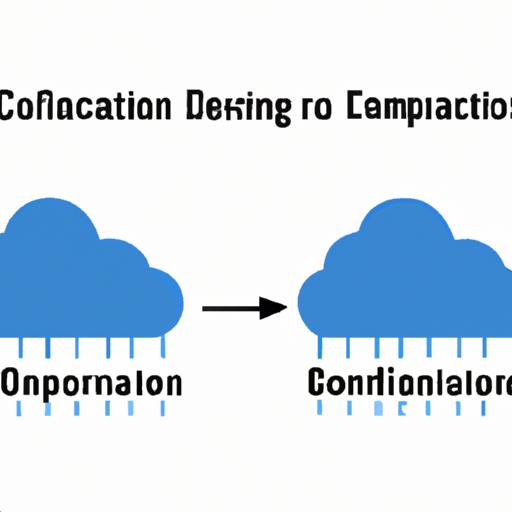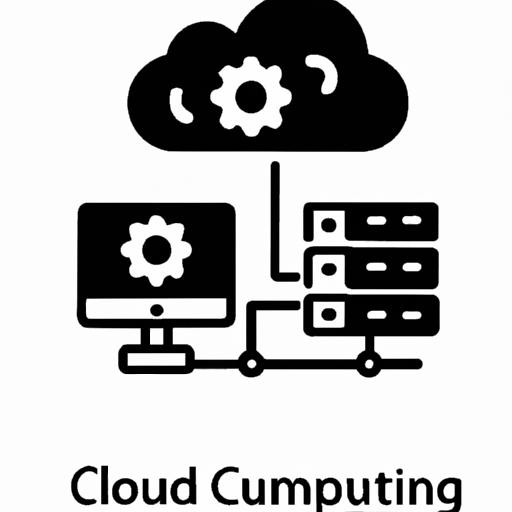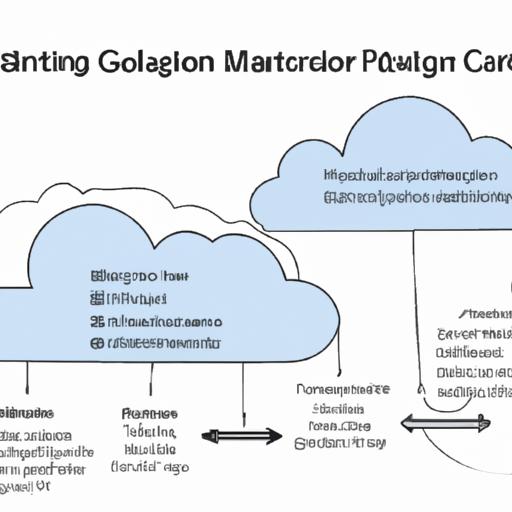Cloud computing has revolutionized the way businesses operate, allowing them to store, manage, and access data and applications remotely. However, the convenience of cloud computing comes with its own set of challenges, particularly in terms of data and service separation.
In cloud computing, one common mechanism for providing this separation of data and services is essential to ensuring the security and privacy of sensitive information. This mechanism ensures that data and services are isolated from each other, preventing unauthorized access and data breaches.
The importance of data separation in cloud computing cannot be overstated. With the increasing amount of sensitive data being stored in the cloud, it is essential to ensure that this data is secure and protected from cyber threats. Data separation allows businesses to control access to sensitive information and reduce the risk of data breaches, while also ensuring that services are not impacted by potential security breaches.
In the following sections, we will explore the different mechanisms for providing data separation in cloud computing, the advantages and disadvantages of each, and why one common mechanism is essential to ensuring the security and privacy of data in the cloud.
Data Separation in Cloud Computing

Definition of Data Separation
Data separation refers to the practice of isolating different types of data within a cloud computing environment. This separation ensures that sensitive or confidential information is not accessible to unauthorized individuals or services.
Importance of Data Separation in Cloud Computing
The importance of data separation in cloud computing cannot be overstated. With the increasing amount of sensitive information being stored in the cloud, it is essential to have a system in place that ensures the security and privacy of this data. Data separation allows organizations to control access to sensitive information, reducing the risk of data breaches and ensuring that services are not impacted by potential security breaches.
Benefits of Data Separation in Cloud Computing
There are numerous benefits to implementing data separation in cloud computing environments. These include:
- Improved security: Data separation ensures that sensitive information is isolated and only accessible to authorized individuals or services, improving overall security.
- Enhanced privacy: By separating data, cloud computing environments can protect privacy by limiting access to sensitive information.
- Reduced risk of data breaches: With data separation in place, the risk of data breaches is significantly reduced as sensitive information is isolated and protected.
- Improved service reliability: By isolating services, cloud computing environments can ensure that individual services are not impacted by potential security breaches, improving overall service reliability.
Mechanisms for Providing Data Separation in Cloud Computing
Definition of Mechanisms
Mechanisms for providing data separation in cloud computing refer to the techniques used to ensure that data and services are isolated from each other. These mechanisms are designed to prevent unauthorized access and data breaches, while also ensuring that services are not impacted by potential security breaches.
Types of Mechanisms for Data Separation in Cloud Computing
There are several mechanisms for providing data separation in cloud computing, including virtualization, containers, and microservices architecture.
Virtualization
Virtualization is a widely used mechanism for data separation in cloud computing. In this mechanism, virtual machines (VMs) are created to run applications and services, each with its own operating system. This allows for better isolation of data and services, as each VM is completely independent of the others. However, virtualization can be resource-intensive and may impact performance.
Containers
Containers are another mechanism for providing data separation in cloud computing. In this mechanism, multiple containers can run on a single operating system, each with its own isolated environment. Containers are lightweight and efficient, making them a popular choice for cloud computing. However, containers may not provide the same level of isolation as virtualization.
Microservices Architecture
Microservices architecture is a newer mechanism for providing data separation in cloud computing. In this mechanism, applications are broken down into smaller, independent services, each with its own data storage and processing capabilities. This allows for greater flexibility and scalability, as each service can be scaled independently. However, microservices architecture can be complex to manage and may require additional resources.
Advantages and Disadvantages of Each Mechanism
Each mechanism for providing data separation in cloud computing has its own advantages and disadvantages. Virtualization provides better isolation but may impact performance, while containers are lightweight but may not provide the same level of isolation. Microservices architecture provides greater flexibility but can be complex to manage. Ultimately, the choice of mechanism will depend on the specific needs and requirements of each business or organization.
Common Mechanism for Providing Data Separation in Cloud Computing
Definition of the Common Mechanism
The common mechanism for providing data separation in cloud computing is known as Virtual Private Cloud (VPC). This is a secure and isolated private network environment within a public cloud infrastructure. VPC allows businesses to create their own virtual network and control the network topology, including IP addresses, subnets, and routing tables.
How the Common Mechanism Provides Data Separation in Cloud Computing
VPC provides data separation by isolating the cloud resources used by different customers. Each VPC is isolated from other VPCs and from the public internet, ensuring that data and services are protected from unauthorized access and data breaches. Businesses can set up multiple VPCs to separate different types of data and services and control access to each VPC.
Advantages and Disadvantages of the Common Mechanism
The advantages of using VPC for data separation in cloud computing include:
- Enhanced security: VPC provides a secure and isolated environment for data and services, reducing the risk of data breaches and unauthorized access.
- Customizable network topology: Businesses can create their own virtual network topology, allowing them to control the flow of data and services within their VPC.
- Scalability: VPC is highly scalable, allowing businesses to add or remove cloud resources as needed.
The disadvantages of using VPC for data separation in cloud computing include:
- Complexity: Setting up and managing a VPC can be complex, particularly for businesses with limited IT resources and expertise.
- Cost: VPC can be more expensive than other mechanisms for data separation in cloud computing, particularly for businesses with large or complex network requirements.
Overall, VPC is a reliable and effective mechanism for providing data separation in cloud computing, particularly for businesses with high security and privacy requirements.
Use Cases of the Common Mechanism for Providing Data Separation in Cloud Computing
Real-life Examples of the Common Mechanism in Action
One real-life example of the common mechanism for providing data separation in cloud computing is the use of virtual private networks (VPNs). VPNs are a popular way for businesses to connect securely to cloud resources, ensuring that data is kept separate from other clients’ data and services. By encrypting data and creating a secure tunnel between the user and the cloud, VPNs allow businesses to securely access cloud resources without compromising sensitive information.
Another example is the use of multiple virtual machines (VMs) in the cloud, each of which is isolated from other VMs, ensuring that data and services are kept separate. This is particularly useful for businesses that require multiple applications and services in the cloud, as each VM can be customized to meet specific requirements while ensuring that sensitive data is kept separate.
How the Common Mechanism Has Benefited Businesses and Organizations
The use of a common mechanism for providing data separation in cloud computing has benefited businesses and organizations in several ways. Firstly, it has allowed businesses to store and manage sensitive data in the cloud without compromising security or privacy. This has resulted in reduced costs and increased efficiency, as businesses no longer need to invest in expensive on-premises infrastructure to store and manage data.
Secondly, the use of a common mechanism has enabled businesses to scale their operations more easily, as they can quickly and easily provision new resources in the cloud without needing to worry about data and service separation. This has allowed businesses to respond more quickly to changing market conditions and customer needs, resulting in increased competitiveness and profitability.
Challenges and Solutions in Implementing the Common Mechanism
While the common mechanism for providing data separation in cloud computing offers many benefits, there are also challenges involved in implementing it. One of the main challenges is ensuring that the mechanism is properly configured and maintained, as any misconfigurations or vulnerabilities could compromise the security and privacy of sensitive data.
To mitigate these challenges, businesses must ensure that they have the necessary expertise and resources to properly configure and maintain the common mechanism. This may involve investing in additional security tools and technologies, as well as training employees on best practices for securing data in the cloud.
Overall, the use of a common mechanism for providing data separation in cloud computing is essential to ensuring the security and privacy of sensitive information in the cloud. By implementing this mechanism effectively, businesses can leverage the benefits of cloud computing while also reducing the risk of data breaches and other security incidents.
Conclusion
In conclusion, data separation is a critical component of cloud computing, and one common mechanism for providing this separation is essential to ensuring the security and privacy of sensitive information. By isolating data and services from each other, businesses can control access to sensitive information and reduce the risk of data breaches, while also ensuring that services are not impacted by potential security breaches.
As we have seen, there are several mechanisms for providing data separation in cloud computing, each with its own advantages and disadvantages. However, by implementing one common mechanism, businesses can ensure consistency and standardization in their data separation practices, while also benefiting from the strengths of each mechanism.
At WEEKLY NEWS- Daily News Update, we understand the importance of data separation in cloud computing, and we are committed to providing our readers with the latest news and insights on this critical topic. Stay tuned for more informative articles on cloud computing and other important technology trends.



